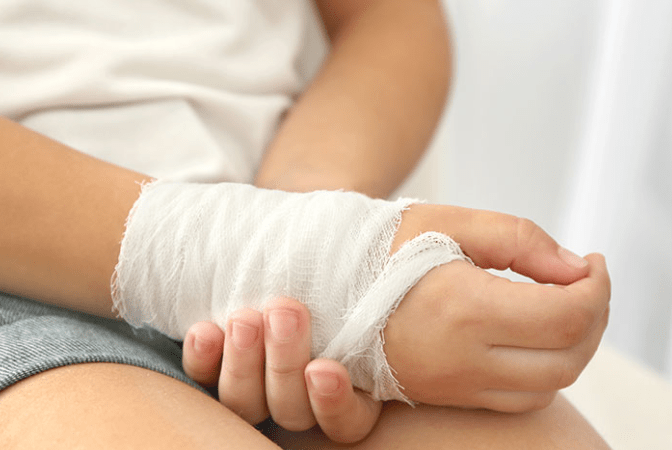As a parent, one of your greatest fears is seeing your child injured. Whether it happens during playtime, sports activities, at school, or even at home, knowing how to respond promptly and effectively can make a significant difference in their recovery and well-being. This comprehensive guide provides essential steps to take if your child gets injured, ensuring you can act calmly and confidently in a stressful situation.

1. Assess the Situation
The first priority is to assess the severity of the injury. Remain calm and quickly evaluate the situation to determine if emergency medical attention is needed. Look for signs of distress, bleeding, swelling, or unconsciousness. If the injury appears serious, do not hesitate to call 911 or your local emergency number immediately.
2. Provide First Aid
If the injury is minor and does not require emergency assistance, administer first aid as needed. This may include cleaning wounds with mild soap and water, applying sterile bandages or dressings, and immobilizing injured limbs if necessary. Use ice packs to reduce swelling and pain, but be cautious not to apply ice directly to the skin.
3. Comfort and Reassure
Children can become frightened or anxious after an injury. Comfort your child with gentle reassurance and empathy. Stay composed and provide emotional support to help them feel safe and secure. Encourage them to express how they feel and address any concerns they may have about the injury.
4. Seek Medical Attention
Even if the injury initially seems minor, it’s essential to seek medical evaluation, especially if your child experiences persistent pain, difficulty moving, or if the injury involves the head, neck, or spine. Contact your pediatrician or visit the nearest urgent care center for professional assessment and treatment recommendations.
5. Document the Incident
Keep a record of the injury, including how it occurred, any symptoms observed, and the actions taken. Take photographs of visible injuries if applicable, as this documentation may be useful for medical professionals and insurance purposes.
6. Communicate with School or Care Providers
If the injury occurs at school, daycare, or under the supervision of caregivers, notify them promptly. Provide details about the injury and any medical instructions given by healthcare providers. Maintain open communication to ensure consistent care and monitoring of your child’s recovery.
7. Manage Pain and Follow Medical Advice
Follow the healthcare provider’s instructions for managing pain and promoting healing. Administer prescribed medications as directed and monitor your child’s progress closely. Encourage rest and limit physical activities until cleared by a healthcare professional.
8. Monitor for Signs of Complications
Be vigilant for any signs of complications following the injury, such as increased pain, swelling, redness, or changes in behavior. Contact your healthcare provider immediately if you notice any concerning symptoms or if your child’s condition worsens.
9. Address Emotional and Psychological Impact
Injuries can have a significant emotional impact on children. Be attentive to any signs of emotional distress, anxiety, or behavioral changes. Encourage open communication and consider seeking counseling or support services if needed to help your child cope with the experience.
10. Understand Legal Rights and Options
In cases where the injury results from negligence or misconduct, understanding your legal rights is crucial. Consult with a reputable personal attorney in Denver, especially one knowledgeable in personal injury law, to explore potential legal options. This is particularly important if the injury occurred due to a car accident, defective product, premises liability, or medical malpractice.
Conclusion
Knowing what to do if your child gets injured empowers you to respond effectively during a stressful and uncertain time. By remaining calm, providing prompt medical attention, and ensuring ongoing support and monitoring, you can help facilitate your child’s recovery and well-being. Stay informed, communicate openly with healthcare providers and caregivers, and seek professional guidance as needed to navigate the challenges of managing a child’s injury with confidence and care.



